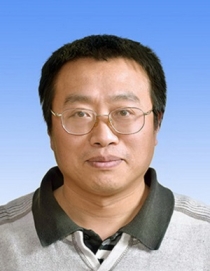
邮箱:hongzhang@ibp.ac.cn
座机:010-64848238
|
1987 - 1991 安徽大学,本科 1991 - 1994 北京大学医学部,硕士 1994 - 2001 美国爱因斯坦医学院,博士 2001 - 2004 马萨诸塞总医院癌症中心,博士后 2004 - 2009 北京生命科学研究所,研究员 2009 - 2012 北京生命科学研究所,高级研究员 2012 - 至今 金沙集团1862cc,研究员 获奖及荣誉: 2020年 第二届全国创新争先奖 2019年 中国细胞生物学学会“杰出成就”奖 2018年 臻溪生命学者奖 2014年 中青年科技创新领军人才 2013年 谈家桢生命科学创新奖 2012年 国家杰出青年科学基金 2012年 霍华德·休斯医学研究所国际青年科学家奖 2006年 Lilly亚洲杰出科研成就奖 研究方向: 我们实验室的兴趣主要集中在研究多细胞生物中自噬作用的机理和调控机制。细胞自噬是一种溶酶体介导的降解系统。它通过形成一种叫做自噬小体的双膜结构来包裹细胞质和一些受损的细胞器。自噬小体最终与溶酶体发生融合,以完成对底物的降解。在哺乳动物中,自噬作用参与了许多生理过程,包括抵御饥饿胁迫,清除有毒性倾向的蛋白,对抗外来病原入侵以及决定细胞死亡和组织动态平衡等。自噬作用的紊乱会引起许多病理反应,包括神经退行性疾病,肝功能异常,心肌梗塞,肿瘤发生等严重疾病。秀丽线虫(C. elegans)拥有丰富的发育生物学的背景和便利的遗传实验手段。这使得秀丽线虫成为研究自噬作用过程以及蛋白质聚集体的选择性降解机制的良好模型。 我们实验室的前期工作建立了秀丽线虫作为多细胞生物自噬的模型以研究细胞自噬的作用机理、调控机制以及生理功能。我们发现在线虫胚胎发育的过程中,有许多蛋白聚合体是被自噬作用选择性地降解,包括了特异存在于生殖细胞中的P颗粒。我们克隆了SEPA-1这个介导P颗粒被自噬系统选择性降解的关键因子。通过遗传筛选,我们还发现了多细胞生物特异的参与自噬作用的多个基因,比如epg-3, epg-4, epg-5和epg-6,丰富了人们对多细胞生物体中自噬作用机理的认识。 实验室以后的工作主要集中在: 1. 开展多细胞生物组织特异自噬新基因的克隆和功能研究。 2. 阐述自噬选择性降解蛋白聚集体过程中的分子机制。 3. 研究多细胞生物发育过程中,自噬如何感应各种信号刺激进而维持机体稳态平衡。 4. 揭示自噬作用在多细胞生物发育过程中的生理学功能,尤其是自噬异常在神经退行性疾病发生发展中的作用。 代表论著: 1. Chen, D., Zheng, Q. X., Sun, L., Ji, M. M., Li, Y., Deng, H. Y., and Zhang, H. (2021) ORF3a of SARS-CoV-2 promotes lysosomal exocytosis-mediated viral egress. Developmental Cell (In Press). 2. Liu, N., Zhao, H.Y., Zhao, Y.G., Hu, J.J. and Zhang, H. (2021) The ER membrane proteins Atlastin 2/3 regulate ER targeting of the ULK1 complex and formation of the ER-isolation membrane contact. The Journal of Cell Biology 220, e202012091. 3. Miao, G., Zhao, H., Li, Y., Ji, M., Chen, Y., Shi, Y., Bi, Y., Wang, P., Zhang, H. (2021) ORF3a of the COVID-19 virus SARS-CoV-2 blocks HOPS complex-mediated assembly of the SNARE complex required for autolysosome formation, Developmental Cell 56, 427-442 (Cover story). 4. Chen, D., Wang, Z., Zhao, Y.G., Zheng, H., Zhao, H.Y., Liu, N., and Zhang, H. (2020) Inositol polyphosphate multikinase inhibits liquid-liquid phase separation of TFEB to negatively regulate autophagy activity. Developmental Cell 55, 588-602. 5. Miao, G.Y., Zhang, Y.J., Chen, D., and Zhang, H. (2020) The ER-localized transmembrane protein TMEM39A/SUSR2 regulates autophagy by controlling the trafficking of the PtdIns(4)P phosphatase SAC1. Molecular Cell 77, 618-632. 6. Li, D.F., Zhao, G.Y., Li, D., Zhao, H.Y., Huang, J., Miao, G.Y., Feng, D., Liu, P.S., Li, D., and Zhang, H. (2019). The ER-localized protein DFCP1 modulates ER-LD contact formation. Cell Reports 27, 343-358. 7. Zhang, G.M., Wang, Z., Du, Z., and Zhang, H. (2018) mTOR regulates phase separation of PGL granules to modulate their autophagic degradation. Cell 174, 1492-1506. 8. Zhao, G.Y., Chen, Y., Miao, G.Y., Zhao, H.Y., Qu, W.Y., Li, D.F., Wang, Z., Liu, N., Li, L., Chen, S., Liu, P.S., Feng, D., and Zhang, H. (2017) The ER-localized transmembrane protein VMP1 regulates SERCA activity to control ER-isolation membrane contacts for autophagosome formation. Molecular Cell 67, 974-989. (Cover story) 9. Wang, Z., Miao, G.Y., Xue, X., Guo, X.Y., Yuan, C.Z., Wang, Z.Y., Zhang, G.M., Feng, D., Hu, J.J., and Zhang, H. (2016) The Vici syndrome protein EPG5 is a Rab7 effector that determines the fusion specificity of autophagosomes with late endosomes/lysosomes. Molecular Cell 63, 781-795. 10. Wu, F., Watanabe, Y., Guo, X.Y., Qi, X., Wang, P., Zhao, H.Y., Wang, Z., Fujioka, Y., Zhang, H., Ren, J.Q., Fang, T.C., Shen, Y.X., Feng, W., Hu, J.J., Noda, N.N. and Zhang, H. (2015) Structural basis of the differential function of the two C. elegans Atg8 homologs, LGG-1 and LGG-2, in autophagy. Molecular Cell 60, 914-929. 11. Zhao, G.Y., Sun, L., Mia, G.Y., Ji, C.C., Zhao, H.Y., Sun, H.Y., Miao, L., Yoshii, S.R., Mizushima, N., Wang X.Q., and Zhang, H. (2015) The autophagy gene Wdr45/Wipi4 regulates learning and memory function and axonal homeostasis. Autophagy 11, 881-890. 12. Guo, B., Liang, Q.Q., Li, L., Hu, Z., Wu, F., Zhang, P.P., Ma, Y.F., Zhao, B., Kovács, A.L., Zhang, Z.Y., Feng, D., Chen, S., and Zhang, H. (2014) O-GlcNAc-modification of SNAP-29 regulates autophagosome maturation. Nature Cell Biology 16, 1215-1226. 13. Li, S.H., Yang, P.G., Tian, E, and Zhang, H. (2013) Arginine methylation modulates autophagic degradation of PGL granules in C. elegans. Molecular Cell 52, 421-433. 14. Zhao, H.Y., Zhao, G.Y., Wang, X.W., Xu, L.J., Miao, L., Feng, D., Chen, Q., Kovács, A.L. Fan, D.S., and Zhang, H. (2013) Mice deficient in Epg5 exhibit selective neuronal vulnerability to degeneration. The Journal of Cell Biology 200, 731-741. 15. Lu, Q., Yang, P.G., Huang, X.X., Hu, W.Q., Guo, B., Wu, F., Lin, L., Kovács, A.L., Yu, L. and Zhang, H. (2011) The WD40 repeat PtdIns(3)P-binding protein EPG-6 regulates progression of omegasomes to autophagosomes. Developmental Cell 21, 343-357. 16. Tian, Y., Li, Z.P., Hu, W.Q., Ren, H.Y., Tian, E, Zhao, Y., Lu, Q., Huang, X.X., Yang, P.G., Li, X., Wang, X.C., Kovács, A.L., Yu, L. and Zhang, H. (2010) C. elegans screen identifies autophagy genes specific to multicellular organisms. Cell 141, 1042-1055. 17. Zhang, Y.X., Yan, L.B., Zhou, Z., Yang, P.G., Tian E, Zhang, K., Zhao, Y., Li, Z.P., Song, B., Han, J.H., Miao, L., and Zhang, H. (2009) SEPA-1 mediates the specific recognition and degradation of P granule components by autophagy in C. elegans. Cell 136, 308-321. |